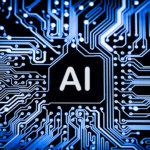Infosys’ Humble and Collaborative Culture Supports Commitment to Clients and Partners
In March 2024 Infosys hosted industry analysts for its U.S. Analyst and Advisor Meeting. The packed agenda included client stories and technology partner presentations to reinforce Infosys’ role in the IT services and cloud market. Infosys executives consistently returned to a few main themes, including delivering business outcomes, maintaining trusted relationships, and focusing on speed, agility and commitment.
Infosys’ Maturing Strategy, Backed by Localization, Training and Partners, Allows the Company to Sustain Client Trust Measured by Business Outcomes
Across an afternoon, Infosys (NYSE: INFY) leaders hosted a steady stream of clients and technology partners who discussed how they have worked with Infosys to apply technology to business problems and generate both cost savings and growth opportunities. Notably, every panel included at least one client, coming from a wide range of industries and describing a variety of problems addressed — and solved — by Infosys.
In the latter half of the afternoon, Infosys shifted the event’s focus to Oracle (NYSE: ORCL), including holding panel discussions with several Oracle and Infosys executives, most notably Amy Lewis, VP of Strategic Alliances, Oracle, and Oracle’s VP of Strategic Alliances and Sreekumar Sreedharan, VP and Global Lead Oracle Services, Infosys. TBR believes Infosys’ decision to persistently turn over the stage to clients and partners reflects the company’s confidence in its message and capabilities and a maturing of Infosys’ strategy, centered on commitment.
In opening remarks followed by a panel discussion about Infosys’ localization strategy, Infosys EVP Rajesh Varrier, VP Deverre Lierman and Associate VP Ranjana Venkatesh Joshi provided an update on the company’s six U.S. hubs. The six Technology and Innovation Hubs are focused on innovation, technology and education, with a few explicitly tied to universities and all focused on a core set of offerings, such as AI, machine learning and user experience design. Complementing these hubs, Varrier and the other panelists described the company’s 21 Proximity Centers as a foundational investment in Infosys’ effort to embed localization into the company’s overall strategy. Additionally, the panel elevated the value of Infosys Living Labs and tied the discussion to the era of generative AI (GenAI).
Overall, the panel’s description of Infosys’ commitment to developing talent through university programs, apprenticeships and professional training confirmed Infosys’ focus on the U.S. market and dedication to the company’s employees. This commitment is further amplified through Infosys’ use of AI and proprietary knowledge management platforms such as Wingspan.
In TBR’s view, IT services vendors like Infosys, whose India-based talent pool is necessary to its business model, must smartly balance low-cost delivery with on-site, highly trained, localized professionals who can go beyond clients’ technology and into their core business challenges. Clients and Infosys executives further solidified the role of the Innovation and Technology hubs, using the tagline, “Experience the Commitment.”
Infosys’ Data Capabilities and Humble Approach to Clients’ Data Issues Allow the Company to Build a Strong Foundation for GenAI Success Backed by Cloud
For the remainder of the afternoon, Infosys’ presentations included sessions on Infosys Topaz; Infosys Cobalt; Oracle transformations; ways customers and partners are tackling supply chain transformation; and testimonials from clients in the energy, telco, banking, automobile and retail industries.
The common theme among client use-case discussions revolved around data. It is easy to jump into a GenAI discussion and win a deal or two, but Infosys understands that without the right data, GenAI models are only as good as the data you feed them, reflecting the company’s humble position in the market. And Infosys’ data work went beyond data cleansing and data wrangling, often including data strategy, providing a strong use case that elevates the company’s value proposition with clients and alliance partners.
For example, Infosys helped a retail client create a data foundation supporting the client’s digital journey, which included bringing customer data from various sources together to develop personalized experiences and using AI models to generate recommendations that would help associates in stores and online. As Infosys helped with building the data foundation, the company also accounted for developing responsible AI applications because, as the client posited, “Customer data will not change, but how to interact with the customer might change.
And for any of this interaction to happen, people have to trust the data to interact with the data.” In another example, an infrastructure client replaced an incumbent with Infosys because of Infosys’ “transparency, technology and business knowledge, and innovation.” Infosys helped the infrastructure client with data strategy development and execution, once again highlighting the company’s commitment to service quality and execution and its willingness to think about foundation services before the potential additional opportunity in its client approach.
The sample of use cases at the event strengthened our understanding of the type of company Infosys is, as it continues to invest across its core portfolio offerings. For example, since the launch of Infosys Topaz, the company’s suite of AI services and solutions, in 2023, Infosys has already conducted over 250 experiments with clients around the use of AI, as many have begun to scale their deployments, supporting clients’ efforts to accelerate growth while reaching operational efficiencies. Infosys Technology and Innovation Hubs have played a critical role in demonstrating Infosys Topaz’s value in enabling the company to scale experiments.
Relying on its industry playbook and ecosystem of partners, both strategic and specialized ones, with the goal of delivering business outcomes has helped Infosys thrive in client conversations, as according to Infosys, the company continues to also apply GenAI to its own operations, rolling out new capabilities every six weeks.
Meanwhile, Infosys Cobalt remains the linchpin in Infosys’ cloud and overall digital transformation story as the suite continues to support clients’ evolving needs. From migrating clients to cloud to delivering industry cloud to now providing the foundation for AI, Infosys Cobalt and cloud in general, as Infosys EVP Anant Adya positioned it, have become the operating system (OS) for enterprises.
It is a tall order, but Infosys, drawing on its abilities to stitch digital assets together and then execute on clients’ transformation programs, has earned the trust of clients and partners seeking to capitalize on the opportunity cloud and AI present. One could argue that some of Infosys’ peers have similar strategies of bringing cloud and AI together. Infosys’ ability to stay faithful to its value proposition and committed to all parties separates the company from just being willing to take risk to actually carrying the burden through its commercial and SLA agreements. In short, Infosys facilitates transformation and innovation, with a commitment to delivering business outcomes.
Infosys-Oracle Relationship Provides a Strong Use Case of Trust, Transparency and the Future of Ecosystems
Building on almost three decades of experience, executives and joint clients from Infosys and Oracle brought the relationship to life, demonstrating the commitment and trust between the two organizations. We recognize it is not easy for Oracle and Infosys to be present at each other’s conference and/or speak on the other’s behalf, given their broader partner ecosystems and need to maintain neutrality.
But having a dedicated track to discuss the value of the relationship — as Lewis described it, “Infosys is a partner for complex transformations” — sends a strong message to clients seeking to work with transparent partners who understand each other’s portfolios and go-to-market motions. The success of the relationship requires leadership alignment, commitment and sustained investment in training, and, according to Oracle, Infosys is its No. 1 partner in terms of certifications.
The strategic alignment helps, as Oracle does not need to ask, “Why Infosys?” because Infosys is in the verified space, especially as it pertains to executing complex transformation programs at scale. Meanwhile, Oracle’s constant portfolio innovation has also helped Infosys elevate the value of the relationship in dealing with both existing and new clients.
Deploying a three-in-a-box governance model, including Oracle, Infosys and a customer, not just at a project kickoff but at every milestone, provides an opportunity for each party to share feedback around portfolio and client management. These motions are often tested in Oracle’s workshops days, during which Infosys discusses the art of the possible of Oracle cloud with existing Oracle clients seeking to embark on cloud transformation programs. The trust-but-verify approach Oracle has taken — which has included elevating Infosys to become one of the few cloud services providers on Oracle’s partner roster by conducting a third-party audit of Infosys’ cloud practice to ensure strict standards are met in procuring Oracle software on behalf of the client — highlights how serious each company takes the relationship.
Several joint clients’ use cases were presented at the event, adding the necessary details to reflect the depth of the relationship. One client spoke about the importance of delivering IP for niche areas, reference architectures and accelerators as being critical to Infosys’ industry model. Another client discussed switching to Infosys after selecting an out-of-the-box systems integration vendor because of Infosys’ flexibility and demonstrated change management capabilities for the implementation of the Oracle HCM solution. As both Infosys and Oracle evolve their portfolios and go-to-market strategies, accounting for the implications of GenAI while remaining flexible yet connected to the broader ecosystem will be critical to success.
By cozying up to other hyperscalers, Oracle aims to bring more database workloads to the cloud and take back waning database market share. For example, the Oracle-Microsoft (Nasdaq: MSFT) multicloud alliance continues to evolve. Given their large respective database and application footprints, Oracle and Microsoft have always had a unique opportunity to partner and address the requirements of joint customers looking to run the right workload in the right environment.
At the center of this partner opportunity remains a series of interconnected cloud regions that offer a low-latency connection between Oracle Cloud Infrastructure (OCI) and Microsoft Azure, which we suspect is largely appealing to customers who want to build and run Microsoft applications and connect them with Oracle Database on OCI. However, since the 2019 launch of Oracle-Azure interconnected regions, Oracle has formalized its commitment to a multicloud strategy and is pursuing new opportunities with Microsoft that should help both vendors meet their respective goals, which for Microsoft is driving Azure usage and for Oracle is all about migrating legacy databases to clouds outside OCI to take back database market share from born-in-the-cloud peers.
Building off the Oracle Database Service for Microsoft Azure offering launched over a year ago, Oracle recently announced Oracle Database@Azure, a broader portfolio initiative that expands the availability of Oracle database services, including Autonomous Database and Exadata, in Azure data centers. In addition to expanding service availability and ensuring customers can deploy their Oracle database workloads within a single data center, Oracle is taking steps to simplify both the procurement and support processes for customers. For instance, customers can purchase Oracle Database@Azure via the Azure Marketplace using their existing Azure commitments and take advantage of a joint support model from both Oracle and Microsoft.
In TBR’s Top 3 Predictions for Digital Transformation in 2024, we wrote:
“The launch of multiparty alliances beyond the traditional, preferred two-dimensional relationships and the rise of cobranded facilities can help promote these relationships and bring DT to customers in a package rather than in multiphased approaches. While GenAI will be the tool that forces vendors to establish better data strategies, the rise of the superpowers will also force vendors to rethink their go-to-market, sales and portfolio efforts centered on mutual accountability and portfolio knowledge.
“Prioritizing the needs of partners and enterprise buyers over internal growth aspirations will position vendors across the ICT value chain as leading ecosystem participants. It sounds like an idea born in marketing, but digital transformation outcomes will require multiparty business networks that bring together the value propositions of players across the technology value chain.”
We see Infosys as the right partner to pursue such a multifaceted approach, especially as the company understands the value of its core competencies and, more importantly, knows its partners’ strengths. Deploying multifaceted alliance frameworks requires establishing strong governance models rooted in accountability, especially as expanding wallet share from existing accounts by pitching new capabilities can be much harder than hunting new logos.
During a similar event in 2023, Infosys had SAP (NYSE: SAP) on stage. Given Infosys’ pattern, we would not be surprised if the company invited Microsoft along with Oracle or SAP next year. Time will tell, but given how buyers look to the ecosystem to procure services, such a move would not be out of the ordinary.
TBR’s Extensive, Ongoing Coverage of Infosys
TBR will continue to cover Infosys within the IT services, ecosystems, cloud and digital transformation spaces, including publishing quarterly reports with assessments of Infosys’ financial model, go-to-market, and alliances and acquisitions strategies.
For comparison with Infosys’ peers and other IT services vendors, TBR includes Infosys in our quarterly IT Services Vendor Benchmark; our semiannual Global Delivery Benchmark, Cloud Ecosystem Report, and Adobe & Salesforce Ecosystem Report; and our annual Decarbonization Market Landscape and Innovation and Transformation Centers Market Landscape. TBR is also planning to include Infosys as part of our Oracle, SAP and Workday Ecosystem Report, which is scheduled to be published in the summer of 2024.



 Getty Images via Canva Pro
Getty Images via Canva Pro